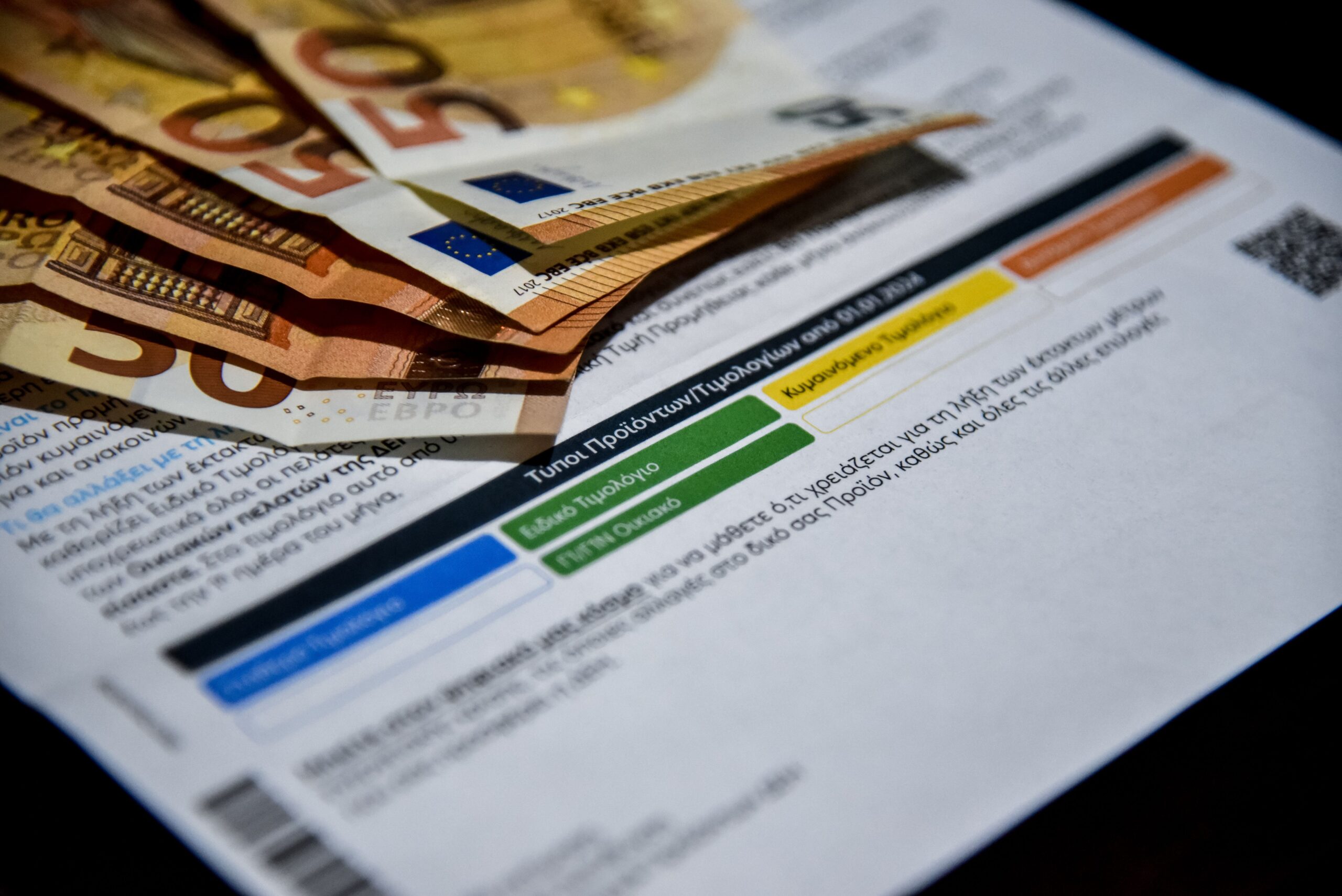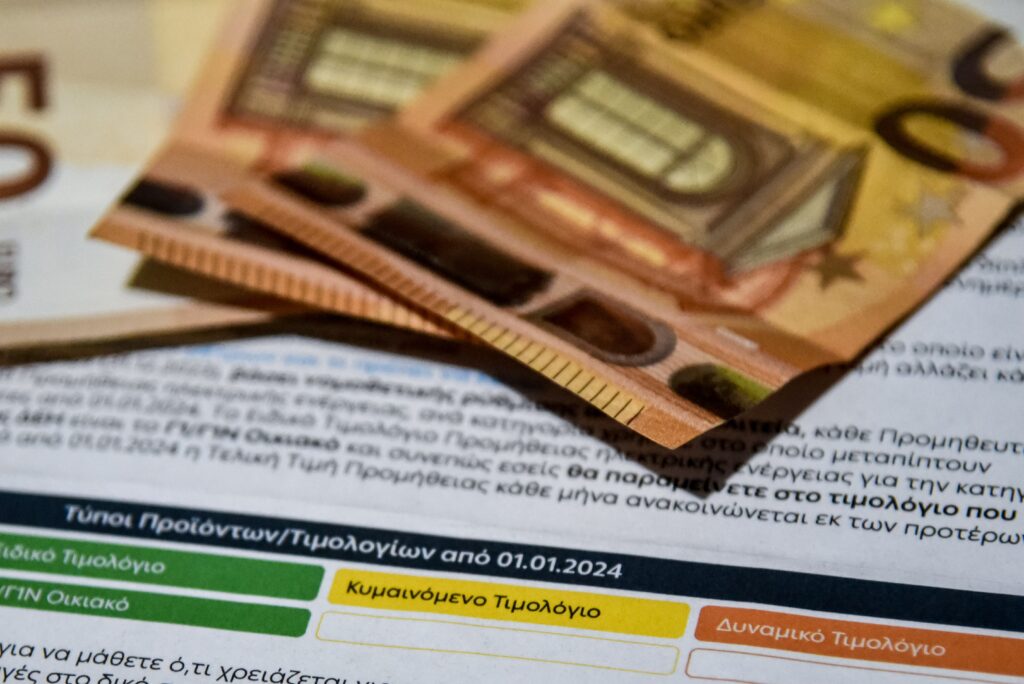
Countdown to New electricity tariffs It has already begun as most consumers are still hesitant about which color to choose. But it ultimately benefits the citizens What are the differences between blue, green, yellow and orange tariffs?
It is stated that it is from January 1, 2024 The new electricity tariff will be implemented, according to which the consumer will know, according to the ministry, “for the first time specifically” what he pays to the electricity provider. It is reported that the new electricity tariff has Four colors: Blue ones are fixed, green ones are special ones, yellow ones are volatile ones, and orange ones are dynamic ones.
Under Law No. 5066/2023, a special tariff (in green) was created, which has common characteristics for all service providers. Its main advantages are that The final price will be known on the first day of each consumption monthIt will make it easier for consumers to compare prices between service providers, thus enabling the consumer to make the most advantageous choice.
DOE’s 10th reason for changes effective January 1, 2024

- Why do we have so many electricity bills?
Because service providers have the right to receive as many bills as they want. Also because the nature of the electricity purchasing system implemented by the European Union is complex. There is a wholesale market where the price fluctuates (constantly changes by the day and hour). There are retail providers, who buy wholesale and sell retail, with many different trading policies. Moreover, because the needs and desires of consumers are completely different, depending on the profile of each consumer (family, business, energy-intensive consumers, etc.).
- What type of invoices are there?
To begin with, there are three types of tariffs (fixed, variable and dynamic) and the consumer (whether a household or a business) chooses what they consider to be the most beneficial to them. More specifically:
- Fixed They are fixed-term invoices, with a fixed invoice price throughout the entire contract period.
- fickle, These are the tariffs linked to the wholesale price on the energy exchange. These are divided into two main categories: i. By setting the price in advance for the consumption period and ii. With prices yet to be determined.
- dynamically, Which relates to the possibility of dynamic pricing, with different prices – even during the day – based on market prices. One of the conditions for choosing these tariffs is the remote operation of a smart meter in the supply to consumers.
For consumer convenience, Bills were associated with color. With the blue Constants with yellow Volatile and with orange Potential.
To these tariffs we add a special tariff, green, whose special advantage is that its structure will be simple and common, allowing comparability for all providers. All consumers will switch to this on 1 January 2024, who – during 2023 – will not choose a specific type of tariff for their switch on 1 January 2024. However, with a simple declaration to their service provider by 31/01/2024, they can stay on their previous acquaintance. also, For any tariff changes made thereafter, the usual procedure will be followed. It should be noted that the special green tariff, which will be available from each provider, will be uniform for all providers.
- Why was this special green tariff introduced?
The main advantage of the green tariff is that it facilitates, for the first time, price comparison between service providers and transparent and simplified information to consumers about service providers’ prices. On 1the On one day of each month, the invoice price will be announced on the website of the relevant provider and will be sent to the RAAE. The consumer will know at the beginning of the month what he will pay to his electricity provider for the following month and, more importantly, what prices are offered by all other providers.
- Will the price change during the month on the green bill?
No, the consumer will see one price every 1the month, which will be “locked” for the duration of the month.
- Can the consumer choose a tariff other than the one he has?
Yes, the consumer has the ability to choose any tariff offered at any time by signing a new contract with the provider of his choice. The only exception is fixed tariffs, which by their nature have long-term contracts. Change of supplier or supply invoice, i.e. takes place at any time and does not entail the right to compensate the supplier due to early departure of the customer, except in cases of termination of the fixed price invoice contract.
- Why do we have different colors on bills?
To make it easier for the consumer to understand the nature of the many different tariffs so that he can better compare tariffs between service providers.
- Isn’t this system very “confusing”?
Yes, the European energy system is complex and it makes sense for the consumer that they do not have the time and inclination to constantly deal with any provider they choose. That is why the “green” tariff was introduced, in which he knows, without particularly caring, the two most important things that interest him: FirstlyWhat is the price next month? secondly Who is cheaper next month?
- Should I switch providers every month to find the cheapest one?
You have the right to do so. On the green tariff, you can track which provider is the cheapest every month, and if you are not satisfied with the provider’s prices for a month or after a few months, you can always switch. It is reasonable for the consumer not to enter into this process, because it is difficult to change providers for a difference of 1-2 euros per month. It is also logical that if he sees that someone is systematically expensive, he will leave him and go to someone who is systematically cheaper than him.
- Why can’t I, who have a fixed blue tariff with a particular provider, compare prices with other providers?
In contrast to each provider’s own (green) bill, in the remaining tariff categories, service providers can offer more than one bill in each category, connected, multiple times, either to services or to other products or to a combination of them. In addition, the amount of the fixed amount can vary significantly for each provider, which reduces the degree of comparability between the energy prices offered. For these reasons, the creation of a green tariff makes comparing tariffs of different service providers more direct, easy and transparent.
10.Will a price check and comparison tool be available?
In electricity bills (electronic and printed) and in letters and other emails that providers will send to consumers, there will now also be a QR code (scanned and read via smartphone) and a link pointing to the Waste, Energy and Water Regulatory Authority’s published price comparison tool website ( RAAEF). There, consumers will be able to be informed, every month, of the price of their provider’s own and shared tariff and compare it with all the tariffs offered.
What we need to know
Their special characteristics He analyzed speaking to ERT the Energy Inspector Michalis Christodoulides.
In the Blue bill, that is, a fixed tariff, and the invoice price is locked for one year. There is a fixed fee per kilowatt hour for the duration of the contract and is not affected by the energy exchange. But if someone decides to leave the blue tariff prematurely, a penalty will be imposed on him. the Yellow bill Which has variable fees, depending on stock market fluctuations. This tariff is 100% exposed on the energy exchange. The average invoice price is calculated over the entire 30-day period.
Based on orange bill, Mr. Christodoulides, He said that he came out to support smart meters, but companies must also provide corresponding services linked to this support, which is not happening.
finish it green Tariff, where the price per kilowatt hour will be formed through one formula, one methodology so that all service providers offer similar things. As for the green color, it is semi-fluctuating and semi-fixed, meaning that the final formation value of kilowatt-hours depends on three parameters. The base price that will be offered by all providers. An adjustment clause will then be added to this price, if activated.
In summary:
Blue bill
- Fixed fee per kilowatt hour for the duration of the contract
- It is not affected by fluctuations in the electricity market
- The highest cost per kilowatt-hour for all types of tariffs
- Opt-out terms apply
Yellow bill
- Variable fees per kilowatt hour per month
- Monthly fees depend on electricity market fluctuations
- The price per kilowatt hour for the month of consumption will be known at the end of the month.
- No withdrawal conditions are imposed
Orange bill
- Variable charge of kWh per hour over 24 hours
- It is affected by fluctuations in the electricity market
- Hourly billing only with smart meter installation
- No withdrawal conditions are imposed
Green bill
- The cost per kilowatt hour is based on fixed and variable rates
- It is affected by fluctuations in the electricity market
- Retrofit conditions apply
- No withdrawal conditions are imposed
Read more: No. Minister of State Ivaliotis: What we should know about choosing the color of the electricity tariff – what are the advantages of each

“Avid problem solver. Extreme social media junkie. Beer buff. Coffee guru. Internet geek. Travel ninja.”





More Stories
“Recycling – Changing the water heater”: the possibility of paying the financing to the institution once or partially
Libya: US General Meets Haftar Amid Tensions Between Governments
New tax exemption package and incentives for business and corporate mergers..